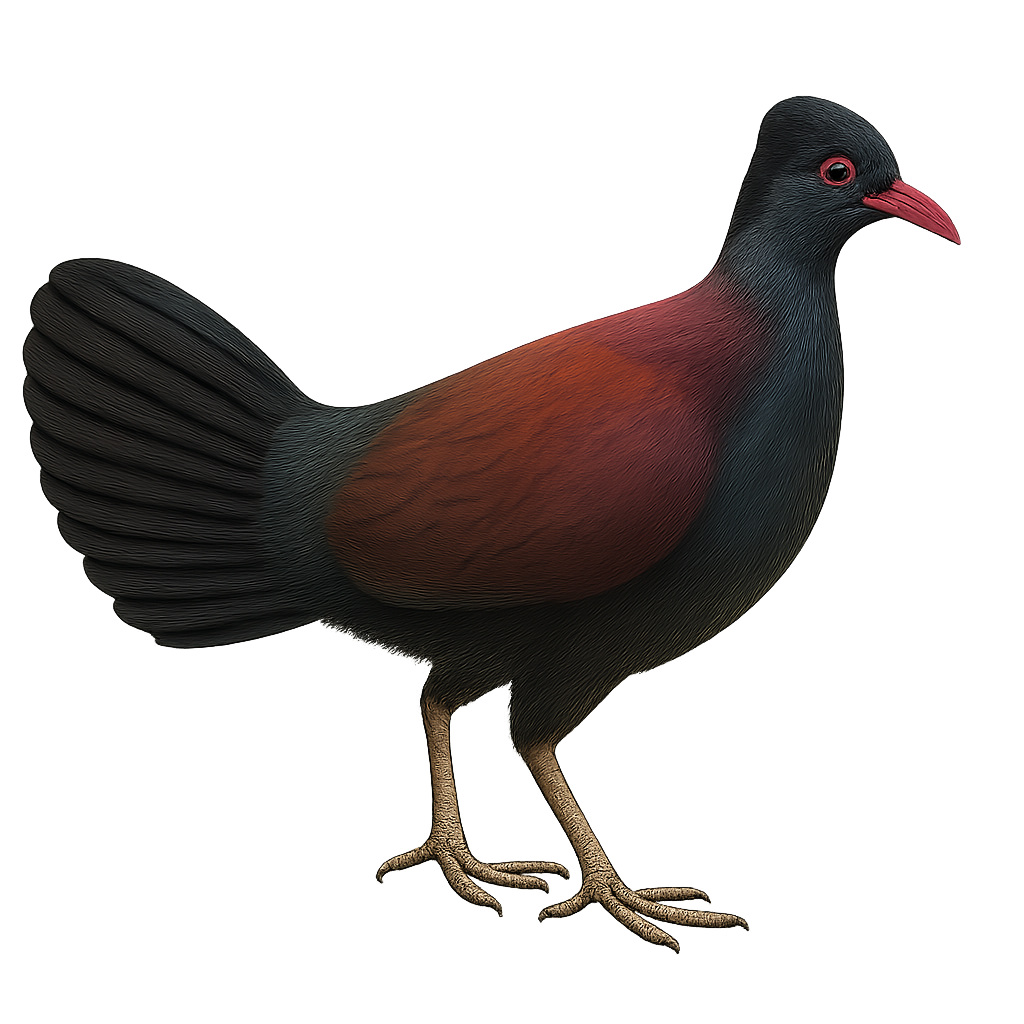Your wildlife photography guide.
Explore the pheasant pigeon in detail, study its behavior, prepare your shots.
Where to observe and photograph the pheasant pigeon in the wild
Learn where and when to spot the pheasant pigeon in the wild, how to identify the species based on distinctive features, and what natural environments it inhabits. The WildlifePhotographer app offers tailored photography tips that reflect the pheasant pigeon’s behavior, helping you capture better wildlife images. Explore the full species profile for key information including description, habitat, active periods, and approach techniques.
Pheasant Pigeon
Scientific name: Otidiphaps nobilis

IUCN Status: Least Concern
Family: COLUMBIDAE
Group: Birds
Sensitivity to human approach: Suspicious
Minimum approach distance: 10 m
Courtship display: April to July
Incubation: 27-29 jours
Hatchings: April to August
Habitat:
Tropical forests, dense undergrowth
Activity period :
Mainly active at night, generally discreet during the day.
Identification and description:
The Pheasant Pigeon, or Otidiphaps nobilis, is a fascinating bird native to the tropical forests of New Guinea. It is distinguished by its metallic green plumage and a head adorned with a white crest. Measuring about 40 cm in length, it has a robust body and strong legs, adapted to its terrestrial lifestyle. Although primarily ground-dwelling, it can fly short distances. Its diet mainly consists of fruits, seeds, and insects. The Pheasant Pigeon is a discreet bird, often difficult to observe due to its suspicious behavior. It plays an important role in seed dispersal, thus contributing to the regeneration of its forest habitat.
Recommended lens:
400 mm – adjust based on distance, desired framing (portrait or habitat), and approach conditions.
Photography tips:
To photograph the Pheasant Pigeon, focus on the tropical forests of New Guinea where it resides. Use a 400mm or longer telephoto lens to capture detailed images without disturbing the bird. Be patient and discreet, as this bird is suspicious. Opt for early morning or late afternoon hours to benefit from soft light. Maintain a distance of at least 10 m to avoid scaring it. A tripod can be useful to stabilize your camera in the dense undergrowth.
The WildlifePhotographer App is coming soon!
Be the first to explore the best nature spots, track rutting seasons, log your observations, and observe more wildlife.
Already 1 430 wildlife lovers subscribed worldwide

